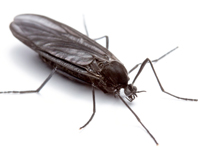Abstract
The Zaranga pannosa species group of the genus Zaranga Moore, 1884 is reviewed and a new species, Zaranga koreana sp. nov. from Korea, is described based on morphology and genetic data. An updated checklist, key, and ecological and distributional notes to the species are provided. Diagnoses and description are given for the described species. A new locality to Zaranga tukuringra Streltzov et Yakovlev, 2007, is given and this species is considered as narrow local endemic of north-west Amur basin, distributed on the huge distance from other Zapanga species.
References
Barma, A.Yu. (2015) New data on biology of the silkmoth-like Lepidoptera in the Amur region. A.I. Kurentsov’s Annual Memorial Meetings, 26, 188–198. [in Russian with English Summary]
Butler, A.G. (1881) Descriptions of new Genera and Species of Heterocerous Lepidoptera from Japan. Transactions of the Entomological Society of London, 1881, (1)–23.
Chang, C.S. & Kim, H. (2015) Cornus alba L. The Woody Plants of Korea. Beta Version. Available from: http://florakorea.myspecies.info/en/taxonomy/term/5177 (accessed 5 December 2020)
Dubatolov, V.V., Streltzov, A.N. & Barma, A.Yu. (2013) Macromoths (Insecta, Lepidoptera, Macroheterocera of Zeyskii Nature Reserve. Amurian zoological journal, 5 (4), 429–445. [in Russian with English Summary]
Folmer, O., Black, M., Hoeh, W., Lutz, R. & Vrijenhoek, R. (1994) DNA primers for amplification of mitochondrial cytochrome c oxidase subunit I from diverse metazoan invertebrates. Molecular Marine Biology and Biotechnology, 3, 294–299.
Gaede, M. (1933) Notodontidae. In: Seitz, A. (Ed.), Die Gross-Schmetterlinge der Erde. Band 2. Supplement. Palaearktische Spinner und Schwämer. A. Kernen, Stuttgart, pp. 173–186. [in German]
https://doi.org/10.5962/bhl.title.9400
Hajibabaei, M., Janzen, D.H., Burns, J.M., Hallwachs, W. & Hebert, P.D.N. (2006) DNA barcodes distinguish species of tropical Lepidoptera. Proceedings of the National Academy of Sciences of the United States of America, 103 (4), 968–971.
https://doi.org/10.1073/pnas.0510466103
Hampson, G.F. (1893) The Fauna of British India including Ceylon and Burma. Vol. 1. Moths.Taylor and Francis Ltd., London, 527 pp. [1892]
https://doi.org/10.5962/bhl.title.48423
Heo, U.H. (2012) Guidebook of moth larvae. Checklist of organisms in Korea 3. Nature and Ecology, Seoul, 520 pp.
Kimura, M. (1980) A simple method for estimating evolutionary rates of base substitutions through comparative studies of nucleotide sequences. Journal of Molecular Evolution, 16 (2), 111–120.
https://doi.org/10.1007/BF01731581
Kristensen, N.P. (2003) Skeleton and muscles: adults. In: Kristensen, N.P. (Ed.), Lepidoptera: Moths and Butterflies 2. Morphology, Physiology, and Development. Handbuch der Zoologie/Handbook of Zoology IV/36. Walter de Gruyter, Berlin & New York, pp. 39–131.
https://doi.org/10.1515/9783110893724.39
Kumar, S., Stecher, G. & Tamura, K. (2016) MEGA7: Molecular Evolutionary Genetics Analysis Version 7.0 for Bigger Datasets. Molecular Biology and Evolution, 33 (7), 1870–1874.
https://doi.org/10.1093/molbev/msw054
Linnaeus, C. (1758) Systema naturae per regna tria naturae, secundum classes, ordines, genera, species, cum characteribus, differentiis, synonymis, locis. Vol. 1. Editio decima, reformata. Laurentii Salvii, Holmiae, iv + 824u pp.
https://doi.org/10.5962/bhl.title.542
Marumo, N. (1920) A revision of the Notodontidae of Japan, Corea and Formosa with description of 5 new genera and 5 new species. Journal of College of Agricultural Imperial University Tokyo, 6, 273–359.
Matsumura, S. (1920) [New genera and new species of the Notodontidae from Japan]. Zoological Magazine Tokyo, 32, 139–151. [in Japanese]
Moore, F. (1884) Descriptions of new species of Indian Lepidoptera-Heterocera. Transactions of the Entomological Society of London, 1884 (3), 355–376.
Park, K.T., Kim, S.S., Tshistjakov, Yu.A. & Kwon, Y.D. (1999) Illustrated Catalogue of Moths of Korea (I) (Sphingidae, Bombicoidea, Notodontidae). In: Park, K.T. (Ed.), Insects of Korea. Series 4. Seoul, South Korea: Korea Research Institute of Bioscience and Biotechnology & Center for Insect Systematics, pp. i–iv + 1–359, pls. 1–23. [in Korean & English]
Ponomarenko, M.G. & Chernikova, P.N. (2018) To the taxonomic position of Lecithocera luridella Christoph and Carcina Hübner in the system of oecophoroid moths (Lepidoptera: Oecophoridae sensu lato). Far Eastern Entomologist, 366, 1–18.
https://doi.org/10.25221/fee.366.1
Qiuyun, X. & Boufford, D.E. (2005) Cornaceae. In: Wu, Z.Y., Raven, P.H. & Hong, D.Y. (Eds.), Flora of China. Vol. 14. Apiaceae through Ericaceae. Science Press, Beijing, and Missouri Botanical Garden Press, St. Louis, Missouri, pp. 206–221.
Rybalkin, S.A. & Yakovlev, R.V. (2017) New for the fauna of Kuril Islands Lepidoptera. Far Eastern Entomologist, 346, 13–16.
https://doi.org/10.25221/fee.346.2Schintlmeister, A. (1989) Ein Beitrag zur Zahnspinnerfauna der koreanischen Halbinsel (Lepidoptera, Notodontidae). Nota Lepidopterologica, 12 (3), 206–226. [in German]
Schintlmeister, A. (2008) Palaearctic Macrolepidoptera. Vol. 1. Notodontidae. Apollo Books, Stenstrup, 482 pp.
https://doi.org/10.1163/9789004260993
Schintlmeister, A. (2013) World Catalogue of Insects. Vol. 11. Notodontidae & Oenosandridae (Lepidoptera). Brill, Leiden, 608 pp.
https://doi.org/10.1163/9789004259188
Stephens, J.F. (1829) The nomenclature of British insects; being a compendious list of such species as are contained in the systematic catalogue of British insects, and forming a guide to their classification. Baldwin and Cradock, London, 68 pp.
https://doi.org/10.5962/bhl.title.51800
Streltzov, A.N. & Yakovlev, R.V. (2007) Zaranga tukuringra, sp. nov.—the new species from new genus for Russian fauna (Lepidoptera: Notodontidae). Eversmannia, 10, 24–26. [in Russian and English]
Streltzov, A.N. (2009) Khokhlatka endemichnaya Zaranga tukuringra Streltzov et Yakovlev, 2007. In: Streltsov, A.N. (Executive Ed.), Red Book of the Amur Region: rare and endangered species of animals, plants and mushrooms. BSPU, Blagoveshchensk, pp. 30–31. [in Russian]
Vlasova, N.V. (1996) Semeistvo Cornaceae—Kizilovye. In: Malyshev, L.I. (Ed.), Flora Sibiriae, 10: Geraniaceae—Cornaceae. Novosibirsk, Nayka, pp. 194–195. [in Russian]
Wootton, R.J. (1979) Function, homology and terminology in insect wings. Systematic Entomology, 4(1), 81–93.
https://doi.org/10.1111/j.1365-3113.1979.tb00614.x
Wu, C.S. & Fang, C.L. (2003) Lepidoptera, Notodontidae. Fauna sinica (Insecta). Vol. 31. Science Press, Beijing, 27 + 952 pp. [in Chinese]
Yanagida, Y., Fukuda, T. & Nakao, K. (2017) Zaranga tukuringra Streltzov & Yakovlev, 2007. In: Yanagida, Y., Fukuda, T. & Nakao, K. (Eds.), Digital Moths of Japan. Available from: http://jpmoth.org/~dmoth/Digital_Moths_of_Asia/90_NOCTUOIDEA/01_NOTODONTIDAE/01_Dudusinae/03_Zaranga/Zaranga%20tukuringra/Zaranga%20tukuringra.htm (accessed 5 December 2020)


